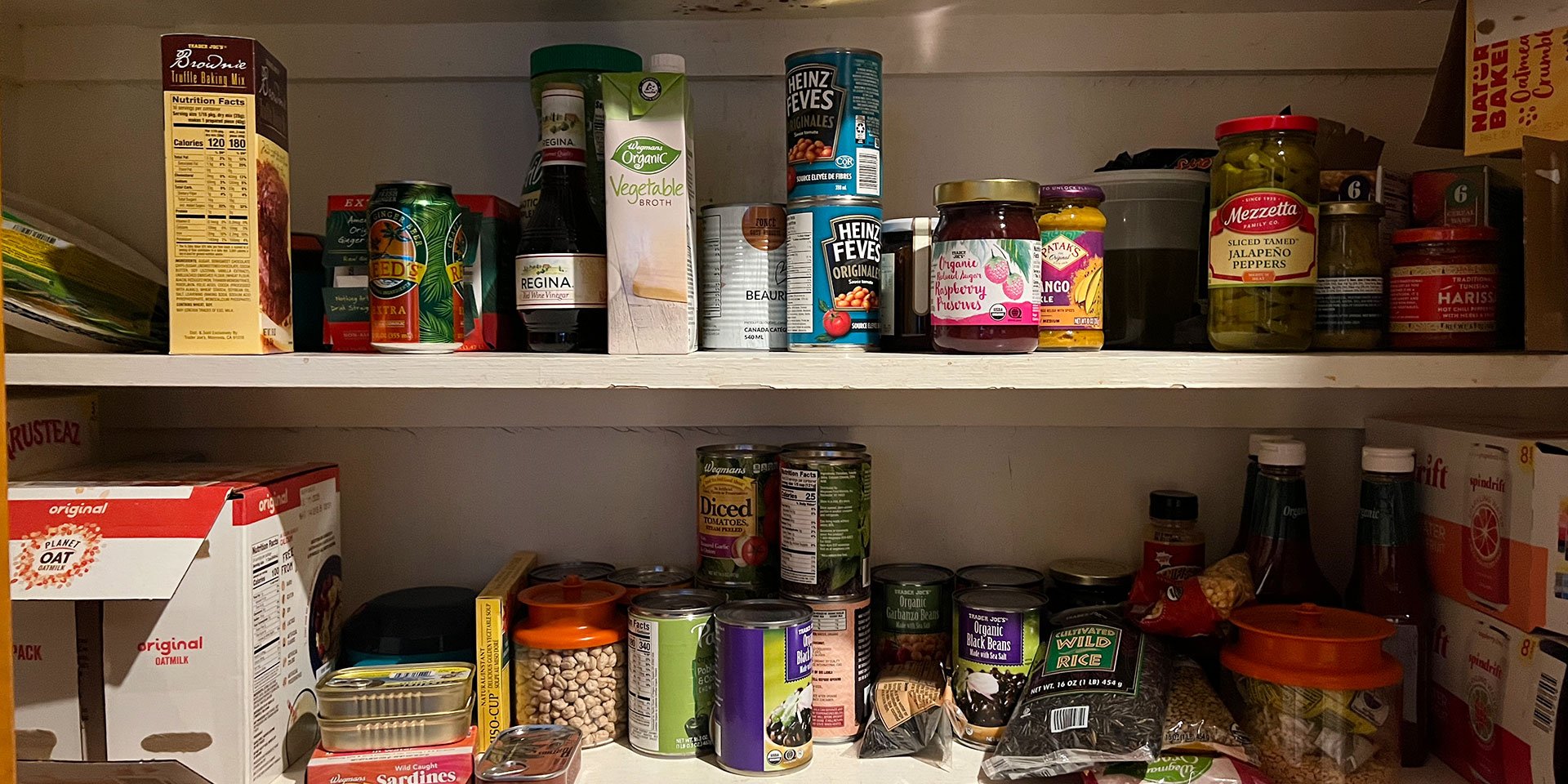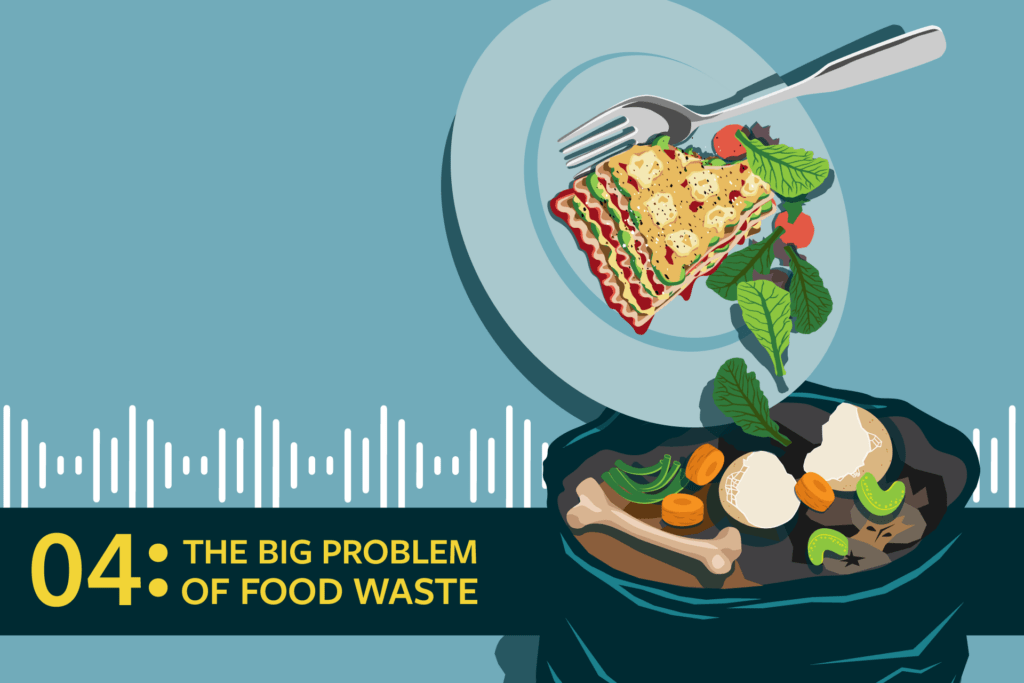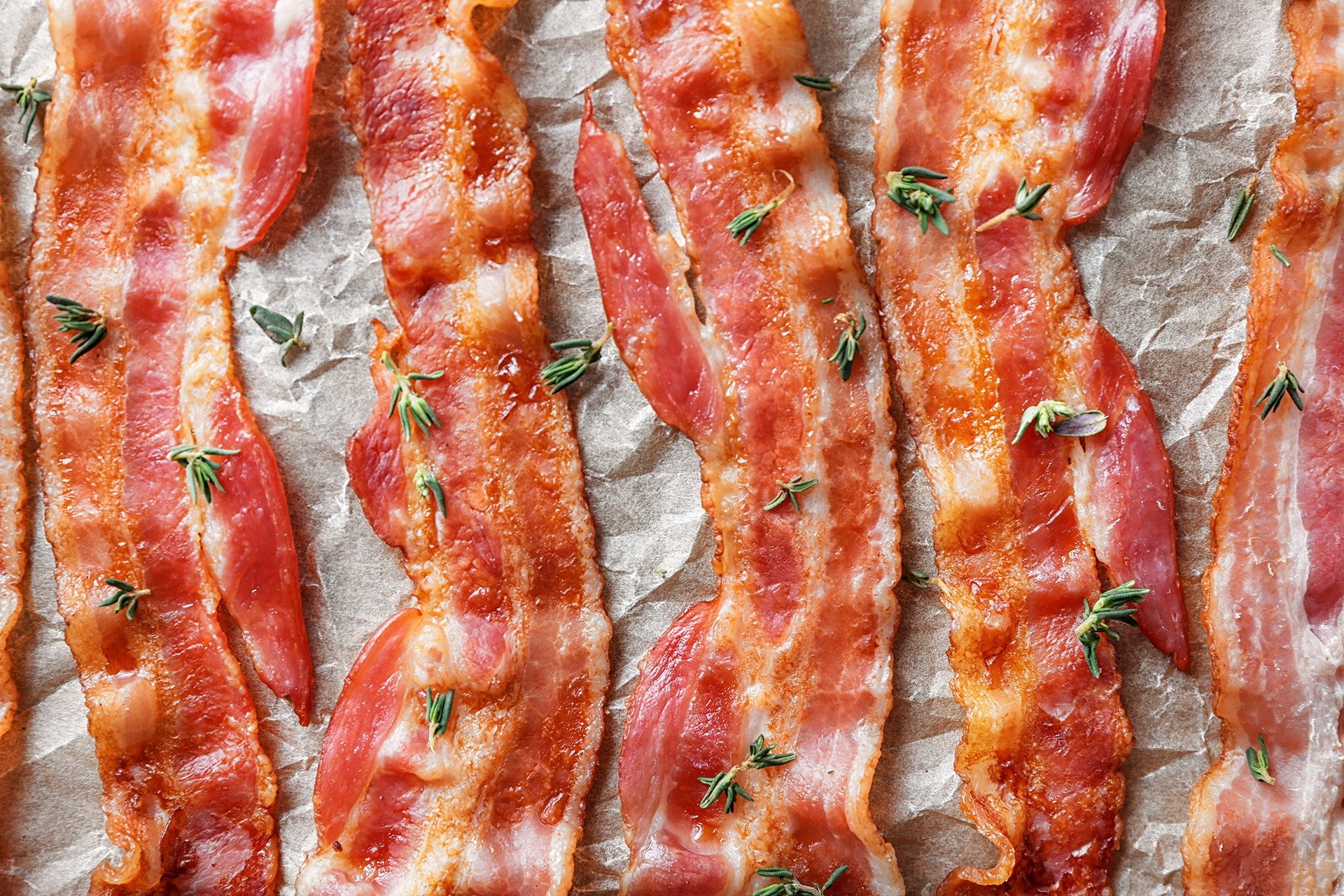For lessons in thrifty, climate-friendly cooking, look to vintage cookbooks
In the mid-1970s, the Mennonite Central Committee (MCC), a relief and social service agency headquartered in Pennsylvania, called upon North Americans to be more thoughtful about their lifestyles and consumption habits. It was a time for questioning: The global food crisis of the early part of the decade, which saw falling food production and widespread famine in parts of the world, was still reverberating. A goal was set for the Mennonite community to do their part and show support for those impacted by eating and spending 10 percent less than they were used to.
Does that sound difficult? Even the Mennonites, with their emphasis on simple living and community service, thought so. “In Mennonite communities across North America, people are responding with a kind of holy frustration,” wrote the Mennonite writer and hunger advocate Doris Janzen Longacre. “‘We want to use less,’ they say. ‘How do we begin? How do we maintain motivation in our affluent society? How do we help each other?’ From questions like these the idea of compiling a cookbook was born.”
To help the community “respond in a caring-sharing way in a world with limited food resources,” congregations were asked to submit examples of how they ate when cutting back. A volunteer women’s network worked to test the more than 1,000 recipes that poured in from worshippers all over the region. Longacre collected the best of those recipes to create the “More-with-Less Cookbook,” which contains some delightful relics of an earlier era — liver fricassee, wheat-germ balls, mock lobster, clam whiffle — but also a multitude of good, simple, economical meals. Since its publication in 1976, the “More-with-Less Cookbook” has sold nearly 850,000 copies worldwide.
Nearly 50 years later, our context is a little different than it was when Longacre was writing. There is no doubt now that humans produce enough food to feed everyone on earth, though widespread hunger persists. And CO2 emissions, which go unmentioned in the “More-with-Less Cookbook,” have more than doubled. But many of the concerns expressed in the book are familiar. An introductory essay by Mennonite author Mary Emma Showalter Eby laments “the fact that convenience foods and eating out have become big business.” Longacre describes rising food prices and “more floods, more droughts.” She also notes that, even in 1976, the average person in the U.S. ate “far more meat than is needed for good health.”
As the climate crisis escalates today, that last point is particularly salient, with meat and dairy production accounting for an estimated 14.5 percent of global greenhouse gas emissions. Scientists, activists and bodies like the United Nations have urged that we cut meat production and consumption, especially in higher-income countries, and especially beef. But economic uncertainty and rising food prices mean the “more-with-less” philosophy is appealing for other reasons, too. Amid the particular pressures of this current moment, we can draw a line to the thinking behind the “More-with-Less Cookbook,” and to other eras that have inspired or required people to change how they eat — whether out of survival or care for others. Flipping through the recipe collections that resulted can offer some guidance and grounding. Much of what the world is currently experiencing has no precedent, but the idea of adjusting our diets? That does.
The 1970s were a heady time for books like the MCC’s, dense with reflections on world food policy and low-meat or vegetarian recipes. Frances Moore Lappé’s “Diet for a Small Planet,” first published in 1971, helped start the conversation about the environmental toll of meat production (among many other issues). And 1975 saw the publication of “Cooking with Conscience” by Alice Benjamin and Harriett Corrigan, who were writing, as they put it, for those “trying to take whatever steps they can to interrupt the process of certain starvation for as many human beings as possible.”
The guidance these writers offer is just as applicable now: Plan your week’s meals and get creative with leftovers. Use a diverse set of ingredients and prioritize produce, legumes and whole grains over animal products. Buy what you can in bulk; get in touch with local farmers; join or organize a co-op. Plant food in your backyard. Eat with the seasons. Learn how to pickle, can, freeze and dry. The authors of these 1970s cookbooks also tend to emphasize that the U.S. diet had only recently become so meat-heavy and reliant on highly processed foods. As Longacre writes: “North Americans have not always eaten this way, so possibly there is hope for change.”
North Americans have indeed not always eaten this way, and there have certainly been periods when cutting back was seen as a collective goal. When the U.S. entered World War II in the early 1940s, the government put systems in place to ration materials and foods to ensure adequate supplies for the military, and to distribute the rest more evenly as supply chains became unpredictable. In 1943’s “Cooking on a Ration,” author Marjorie Mills explains the new reality: “We have taken a sudden nose-dive from happy-go-lucky splashing about with plenty of whipping cream, pounds of butter, sirloin steaks and rib roasts.” The challenge, Mills writes, was “to do what is asked of us, conserve our precious food supply, make it stretch to help feed the hungry.”
Though Mills’s readers likely shared her unquestioning nationalism — a position that may be less resonant today — the ideas of sharing resources and common purpose were powerful motivators then, too. Mills addresses an audience of women “kitchen commandos” and explains that “little tricks of flavor, small subtleties of seasoning” could make the mandatory cutbacks easier and more interesting. With oil and butter rationed, she encourages home cooks to save drippings and rendered fat. Ingredients in lesser demand were not rationed or could be had for fewer ration “points,” so Mills suggests looking to what was plentiful and trying something new — like seafood, considered less desirable at the time, “even the ordinary and inexpensive fish, such as whiting, ocean pout, redfish, and conger.” And she, too, reminds the reader that it all had indeed been done before: “Sturdy fare has seen other generations of Americans through anxious days.”
Mills may have been thinking of the Great War just a few decades earlier, during which “food conservation” was one focus of war-related propaganda. The U.S. government called upon citizens to observe one “wheatless day” — recommending the use of other grains like barley, buckwheat, oats and rye — and one “meatless day,” a framework that would serve, decades later, as the inspiration for the Meatless Monday campaign. Even then, cookbooks were an invaluable tool in sharing knowledge and encouraging participation. The dubiously titled “‘Win the War’ Cook Book” from 1918 includes the evergreen advice to eat seasonally, meal plan and get creative with substitutions, but also promotes the use of ingredients that were then unusual to many — soybeans, olive oil — and some, like banana flour, that still are today.
But at the time Mills was writing, a great shift in American diets had happened in even more recent memory. After the Wall Street crash of late 1929, unemployment ballooned (reaching 25 percent or more at its height) and food insecurity along with it. In addition to using food assistance programs when available, many cut back on costs by foraging and hunting, growing food, learning to preserve it and eating less meat. In fact, people in the U.S. ate less meat per capita in the 1930s than at any other point after 1909, the earliest year for which that data is available.
As ever, people also shared recipes to help each other along. What America Ate, an archival project from Michigan State University, has collected hundreds of digitized community cookbooks (which were often sold to raise money for charity), as well as free advertorial recipe pamphlets from makers of shelf-stable foods like canned beans, deviled ham or pectin for jams and jellies. Some thrifty Depression-era standbys — meatloaf, banana bread, chicken and dumplings, sloppy joes — have become American classics, delicious examples of just how creative we can get.
This creativity and its generative possibilities are particularly salient common threads among these older cookbooks, as well as the best sustainability-focused cookbooks of today. The idea that eating differently is a deprivation is not an inherent truth. Cooking with some constraints requires risks and discomfort, Mills explains in “Cooking on a Ration.” But, she adds: “Does that mean food has to be less fun? On the contrary.” The authors of “Cooking with Conscience” similarly remind the reader of the “creative adventure” of the task at hand.
In the “More-with-Less Cookbook,” Longacre returns to the idea of “eating with joy” as a guiding refrain: “There is a way, I discovered, of wasting less, eating less, and spending less which gives not less, but more.” In the work of earlier food writers like her, it’s possible to find some inspiration to do the same.
Our favorite climate- and budget-friendly tips from vintage cookbooks
Use meat as a seasoning
Longacre had spent three years in Vietnam before writing the “More-with-Less Cookbook,” and among the many culinary techniques she admired from her time there was the ability to create flavor out of a very small amount of meat or seafood. “Meat could be used more imaginatively in North America,” she writes, recalling an occasion watching a cook turn a meager market haul into a feast: “I could not believe anything special would result from the tiny piece of pork and the little handful of shrimp she unfolded from a banana leaf. In my terms, it was enough to serve one person, and we were having guests. But that little bit of meat flavored a whole array of Vietnamese dishes.” A few cubes of pancetta or lardons of bacon, some salted or dried anchovies or fermented fish paste can add savory flavor in a big way.
Get to know offal
In “Cooking on a Ration,” Mills encourages readers to look at cuts of meat they might have previously ignored. While “heads, tails, shins, knuckles, and other oddments” were increasingly of interest to shoppers because of their low ration point value, they were already well known to low-income people the world over who understood well how to turn them into something delicious. “A plump hock of pork is sweet eating,” Mills explains. “Brains blended with sage, dipped in flour and pan-fried to crunchy crispness, are as fine as sausage.” She’s essentially describing nose-to-tail eating — an approach that a 2019 study projected could cut emissions from meat production by up to 14 percent.
Leftovers can make your life easier
In “Diet for a Small Planet,” Lappé introduces the idea of “intentional leftovers” as an option for those who find it dauntingly time-consuming to cook whole foods and prepare meals from scratch. The idea is essentially to incorporate meal prep into your typical cooking process by preparing more of a given meal component than you actually need for that day. Lappé suggests preparing a double batch of grains or freezing beans for use in future soups and salads. “It gives me the option to have our favorite foods ready for us when we are too tired to cook.”
Sauces will save you
“Especial attention must be given to seasoning of dishes which have as their foundation beans, rice or other foods, having little flavor of their own,” the “‘Win the War’ Cook Book” cautions its readers. “Use peppers, onion, garlic, catsup, Worcestershire sauce, etc., for increasing flavor. Beans and nut loaves should be served with highly seasoned sauces.” The strategy of taking basic meals to a new level through saucework is age-old. Lappé notes that a good sauce “can turn any combination of vegetables, pasta, your favorite grain, or sautéed tofu into a delicious dinner.” Longacre also suggests sauces as a way to use up leftovers — for example, just as cooked vegetables and proteins can be the basis of a freeform soup, meaty odds and ends can disappear into a Bolognese-style ragù. (The suggestion to put all your leftovers in a blender and puree them into a pasta sauce has not aged quite as well.)
Learn to love the “loaf”
There’s a reason why meatloaf was so popular during the leaner times of the 1930s. Not only is ground beef typically cheaper than whole cuts, but the dish also makes the meat go further by bulking it up with breadcrumbs, grains or root vegetables. The meatloaf “principle” was often applied more broadly. Take the “fish ring,” a dish of tinned salmon, eggs and breadcrumbs baked in a ring mold, which appeared in a 1932 pamphlet from Pet-brand evaporated milk about low-cost main dishes. “Cooking on a Ration” contains loaves galore — lima bean loaf, cottage cheese loaf, rice-and-peanut butter loaf — and the format was still a standby in the 1970s, by which time the ideas were typically a little more appetizing. The “More-with-Less Cookbook” contains a recipe for spinach loaf that transforms just a few ingredients (cooked spinach, two eggs and a quick bechamel) into a satisfying frittata-style dish. Think of the “loaf” as something more figurative — the act of stretching a few star ingredients to make something filling and delicious.
Get the latest food news from FoodPrint.
By subscribing to communications from FoodPrint, you are agreeing to receive emails from us. We promise not to email you too often or sell your information.
More Reading
15+ ideas for delicious meatless grilling
July 1, 2025
4 Tips for Stretching Your Food Dollars
April 16, 2025
How to use extra onions
April 9, 2025
Our latest podcast episode on pistachios: The making of a food trend
April 1, 2025
This vegan tiramisu will bring you joy
March 11, 2025
Americans love olive oil. Why doesn't the U.S. produce more of it?
February 28, 2025
How to fight household food waste? Join our Eat Down Your Pantry Challenge!
February 13, 2025
During a period of egg chaos, egg replacements for (almost) any situation
February 7, 2025
Ways to go meatless — or less-meat — in January
January 15, 2025



